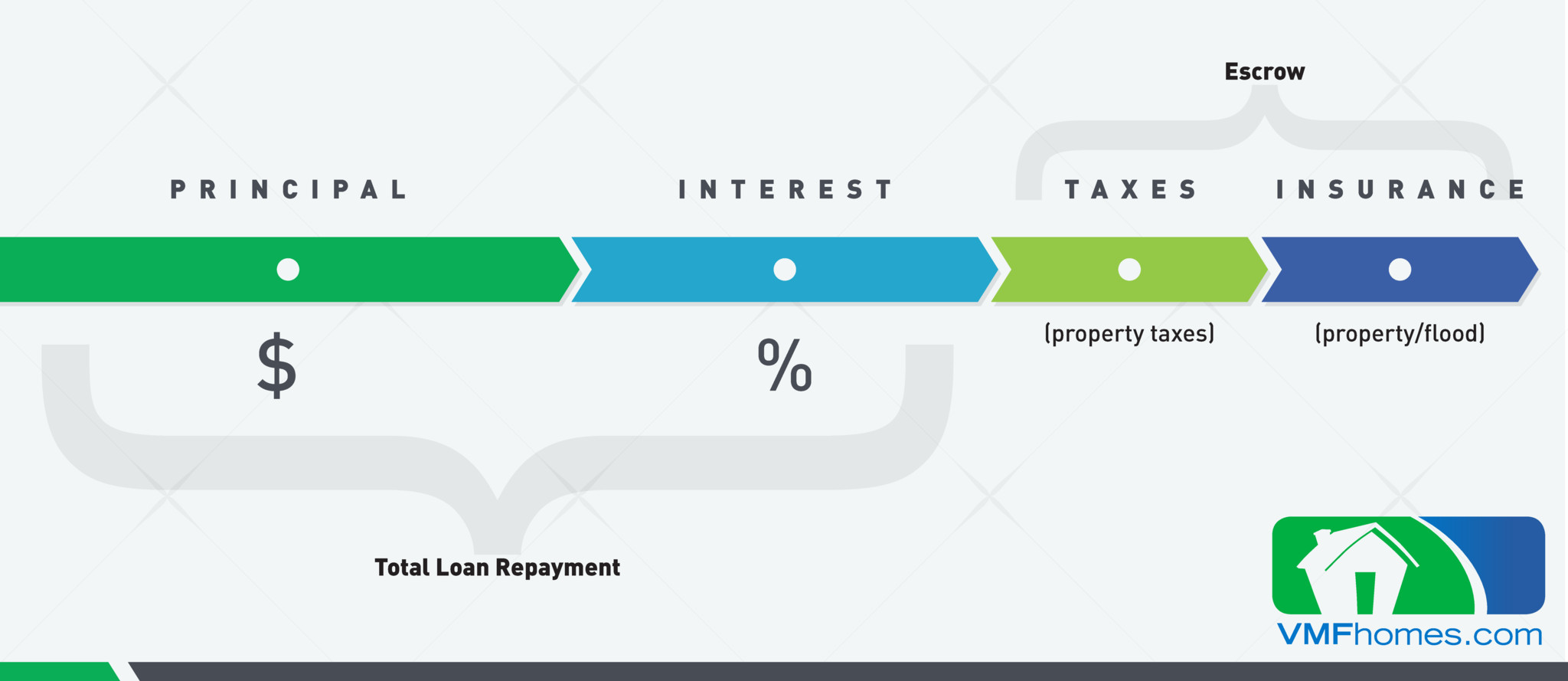

For the first-time homebuyer, or someone unfamiliar with purchasing – the world of mortgages and financing can seem like another language. So, let’s do some translating. Let’s start with the basics.
What does mortgage really mean? A mortgage just means there is an agreement between the buyer and a lender. The lender agrees to loan the buyer money, but if the buyer doesn’t repay the loan, they have the right to take the property. Who offers mortgages? Banks, mortgage companies, and credit unions all can offer mortgages. The process of these lenders funding money to purchase a home is known as financing.
With that in mind, let’s now look at what makes up a mortgage payment. Your mortgage payment has four parts: principal, interest, insurance, and taxes.
The loan amount you have to pay back to lender
Percentage that the lender charges you for borrowing the principal. Mortgages can either be fixed interest rate or adjustable interest rate. Fixed rate mortgages have an interest rate percentage that stays the same for the entire loan term. Adjustable rate mortgages will change percentage over the loan term. In fixed rate loans - principal and interest work like a see-saw because of a process called amortization. Think of your payment as the middle, the fulcrum, the balance of the see-saw. Your principal sits on one side and your interest sits on the other side. In the beginning, your principal payment is on the ground and your interest payment is high in the air with feet dangling down. To start, your monthly payments go toward paying off more of your interest than your principal. As you get toward the end of the life of your loan, monthly payments go more toward your principal, than your interest. At the end, your interest is low to the ground and the principal is high in the air.
Amount added to your monthly payment (if your account is escrowed) to pay for the property taxes on your home. Usually property tax is paid to your local government. Sometimes an escrow account will be created for you. The mortgage servicer collects your money in an account, separate from your mortgage, where funds are held to pay property taxes and insurance.
There are a few types of insurance that may be escrowed: homeowners, flood, and mortgage insurance. Homeowners insurance is the amount you pay to insure your home against losses or damage from something unexpected, like a fire or burglary. Flood insurance is what you pay to protect your home against flood damage if it’s in an area at risk for flooding. Mortgage Insurance (sometimes called Private Mortgage Insurance or PMI) is usually required by your lender if you have a down payment lower than 20 percent of the purchase price. This insurance is to protect the mortgage company from you defaulting or failing to make payments.
EX: Principal - $63,000 x Interest rate – 7% - 20 year loan = $488 monthly payment
*Due to interest over time the amount your loan was for, say $63,000 will cost more over the lifetime of your loan (20 years). In this example, if you paid your monthly payment as listed for 20 years your final cost would be $117,225. Without early or higher monthly payments, you’d pay approximately $54,225 in interest as well as your loan amount.
*Your specific loan amount will be broken down for you by your lender. Check out this mortgage calculator to get a better idea of your specific situation. See how the loan estimate looks here!
With the example, $488 is not all you’ll have to pay. You’ll have to pay taxes, insurance, and utilities. Leave room for other homeowner fees.